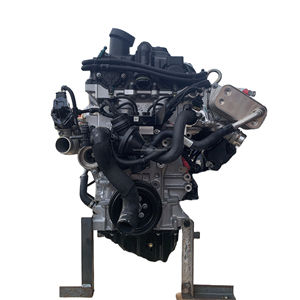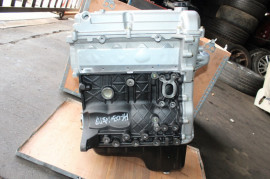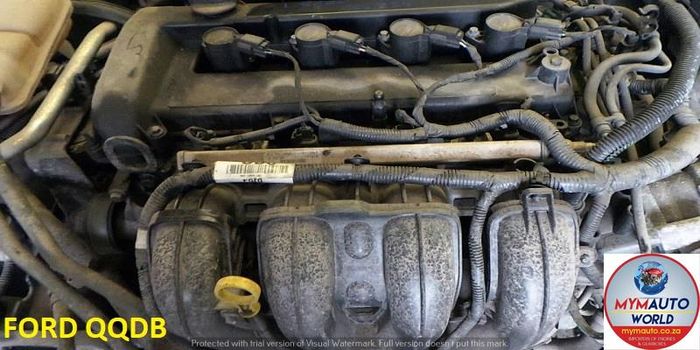Checking Out the Inner Functions of a Compact Vehicle's Engine System
As vehicle drivers, we usually take for provided the complex processes that take place within the confines of our lorry's engine system. In this exploration of a portable car's engine system, we will certainly decipher the internal workings of this mechanical harmony, losing light on the secrets that drive us forward on our day-to-day journeys.
Burning Process Introduction
The combustion procedure in a small lorry's engine system is an essential mechanism that successfully converts gas into power to power the vehicle. This procedure occurs within the combustion chamber of the engine, where gas and air mix, ignite, and produce regulated surges. The combustion process includes four primary stages: consumption, exhaust, power, and compression.
During the consumption phase, the piston relocates downward, drawing in a mix of air and gas into the combustion chamber. This down activity generates the power needed to drive the lorry. This cyclic combustion process is essential to the procedure of a portable vehicle's engine system, guaranteeing effective energy conversion for propulsion.
Piston and Cylinder Communication

The piston's specific fit within the cyndrical tube is crucial for keeping ideal compression and protecting against power loss during combustion. Limited clearances in between the piston and cylinder wall surfaces make certain effective sealing, allowing the piston to relocate efficiently without allowing gases to leak past. Appropriate lubrication is also essential to minimize friction and wear in between these components, improving longevity and efficiency.
Moreover, the design and products utilized in making the piston and cyndrical tube effect engine effectiveness and sturdiness. Modern engines frequently use lightweight yet sturdy materials like light weight aluminum alloys for pistons and cyndrical tube liners to reduce inertia and improve thermal efficiency. On the whole, the harmonious communication between the piston and cyndrical tube is essential to the engine's functionality and general efficiency.
Fuel Shot System Functionality
Fuel injection systems in small vehicle engines play an essential role in exactly supplying fuel to the combustion chamber for regulated and effective ignition. The gas injection system works by infusing gas into the burning chamber at the optimum minute during the engine's operation (opel corsa engine). This exact timing ensures that the fuel blends equally with the air for correct combustion, causing enhanced fuel performance and decreased discharges
There are largely two types of fuel injection systems utilized in compact car engines: port gas shot (PFI) and straight gas shot (DFI) PFI systems infuse gas into the intake port before the intake valve, while DFI systems inject fuel directly into the burning chamber. Both systems have their benefits, with DFI supplying far better gas atomization and PFI giving a more cost-effective service.
Recognizing Engine Air Conditioning Devices
Efficient procedure of a small lorry's engine relies greatly on the effectiveness of its click cooling systems. The air conditioning system in a compact automobile typically is composed of a number of elements working here are the findings with each other to manage the engine temperature. Recognizing these engine cooling systems is essential for maintaining the performance and durability of a compact automobile's engine system.

Exhaust System Parts Explained
The optimum performance of a portable vehicle's engine air conditioning mechanisms depends on a complementary system referred to as the exhaust system, which makes up numerous crucial components for guaranteeing reliable emissions and engine performance. The exhaust system includes components such as the exhaust manifold, catalytic converter, muffler, and tailpipe. The exhaust manifold collects exhaust gases from the engine's cylinders and routes them to the catalytic converter. The catalytic converter then converts damaging contaminants in the exhaust into less hazardous emissions before releasing them with the muffler and tailpipe.
One crucial part of the exhaust system is the oxygen sensing unit, which keeps track of the oxygen degrees in the exhaust gases to aid control fuel consumption and ensure ideal engine performance. opel corsa engine. In addition, the resonator might be present in some exhaust systems to lower sound degrees. Generally, the exhaust system plays an important role in preserving engine efficiency, lowering dangerous emissions, and making certain a quieter driving you can check here experience for compact automobile owners

Verdict
Finally, the portable car's engine system is an intricate combination of parts that work with each other to facilitate the combustion procedure, transform fuel into power, and expel waste gases. Comprehending the internal workings of the engine system, including the piston and cyndrical tube interaction, gas injection system, engine cooling systems, and exhaust system parts, is essential for preserving optimum performance and effectiveness of the lorry.
The combustion process in a small lorry's engine system is a vital device that successfully transforms gas right into power to power the vehicle.Fuel injection systems in compact car engines play an essential duty in specifically supplying gas to the combustion chamber for controlled and efficient ignition.There are mainly two types of gas shot systems used in compact vehicle engines: port fuel injection (PFI) and straight gas shot (DFI) Understanding these engine cooling mechanisms is important for preserving the performance and longevity of a compact vehicle's engine system.
The optimal functioning of a compact vehicle's engine cooling devices depends on a corresponding system recognized as the exhaust system, which consists of different necessary elements for making certain reliable discharges and engine performance.